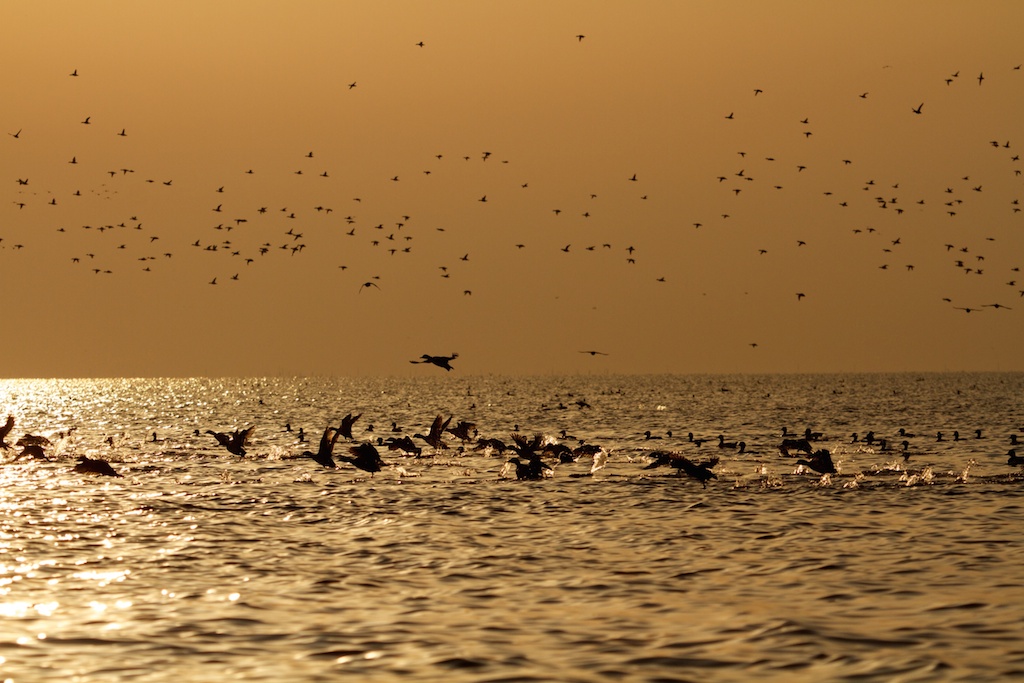
A flock of ducks takes off in Chilika, in the eastern Indian state of Odisha. Popularly known as Chilika Lake, it is Asia’s largest brackish water lagoon, with a maximum water spread of 1165 sq km. However, it is a shallow lake, with an average depth of just 1.5 metres, and a maximum depth of slightly over 4 metres.
Geological evidence suggests that several thousand years ago, Chilika was a part of the Bay of Bengal. Today, a strip of land separates the lake from the sea, with only a narrow mouth to allow the ingress of seawater. In 1981 Chilika was recognised as a wetland of international importance and designated as India’s first Ramsar Site. The Ramsar Convention is an international treaty for the conservation and sustainable utilisation of wetlands. It was signed in 1971 in the city of Ramsar in Iran.
Chilika is at its bustling best during the winter months from December to February, when tens of thousands of migratory waterfowl, including pintail ducks (Anas acuta), arrive to join its permanent residents.

 CI is a non-profit, non-commercial portal that aims to facilitate wildlife and nature conservation by providing reliable information and the tools needed to campaign effectively.
CI is a non-profit, non-commercial portal that aims to facilitate wildlife and nature conservation by providing reliable information and the tools needed to campaign effectively.
Chosen as 'Picture of the Week'
Regarded as a dying lake from the early 1970s until 2002, Chilika is once again a vibrant ecosystem thanks to scientific restoration and management. However, the lake is not without its problems, and much more needs to be done to ensure it's long-term sustainability.